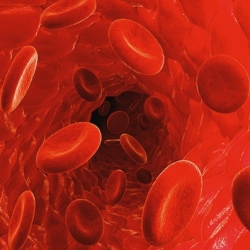
Two floors at the Herston Health Precinct would be converted into a space where researchers, engineers, doctors, nurses and scientists could collaborate on how 3D tissues could improve a patient’s quality of life, in a partnership between QUT and Metro North Hospital and Health Service partnership.
Minister for Health Cameron Dick said biofabrication was a field that brought together medicine, science, engineering and in some ways science fiction to find solutions to problems by manufacturing individual tissue to replace or patch broken bones or cartilage.
"It will be the first time a biomanufacturing institute will be co-located with a high-level hospital," he said.
"Researchers, scientists, nurses and doctors will all be working together to deliver the best outcome for patients.
"Our vision for healthcare is that the biofabrication institute will pave the way for 3D printers to sit in operating theatres, ready to print tissue as needed, in our hospitals of the future."
The institute would have a wide range of capabilities across the two floors, including tissue engineering, clinical scanning and visualisation, 3D modelling and manufacturing, educational spaces and innovation hubs.
Mr Dick said the institute would offer opportunities for Australian scientists and clinicians to be employed in cutting-edge research.
"This institute, opening in 2017, will catapult Queensland onto the global stage as a leader in medical innovation and technology that will change the face of healthcare," he said.
"We anticipate that within the next five years, this institute will be attracting $10-15 million in investment each year."
QUT Biofabrication and Tissue Morphology Group Associate Professor Mia Woodruff said the cells used in 3D printing were taken from the patient to make sure the 3D tissue was not rejected, with all materials FDA approved.
"A lot of the implants we are developing, we can implant into a patient and as the tissue grows back, it is not rejected, the scaffold will resorb over time and the tissue will grow even more and eventually the implant is gone," she said.
"We don’t always have to use metallic implants any more, we can develop really high-spec composite materials that dissolve as the tissue heals."
Professor Woodruff said the "end game" at the institute would be to 3D print an organ.
"Organ transplant lists are endless at the moment and we want to be able to help these people," she said.
"We are not going to be able to 3D print an organ tomorrow but what we are able to do is bring together the researchers, the clinicians, the patients, the engineers, the intellect and industry partners to be able for us to develop new technology to the level where it can be translated into the clinic.
